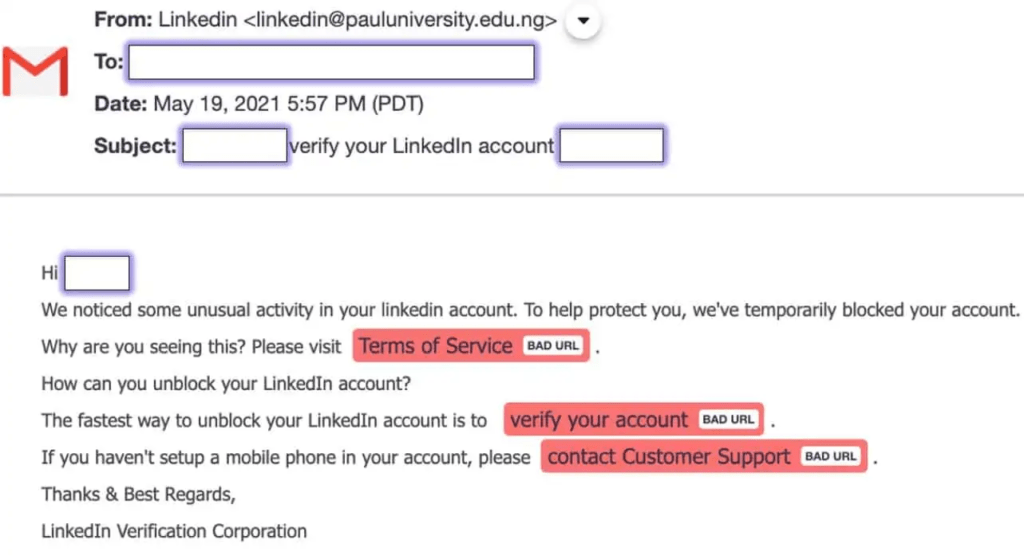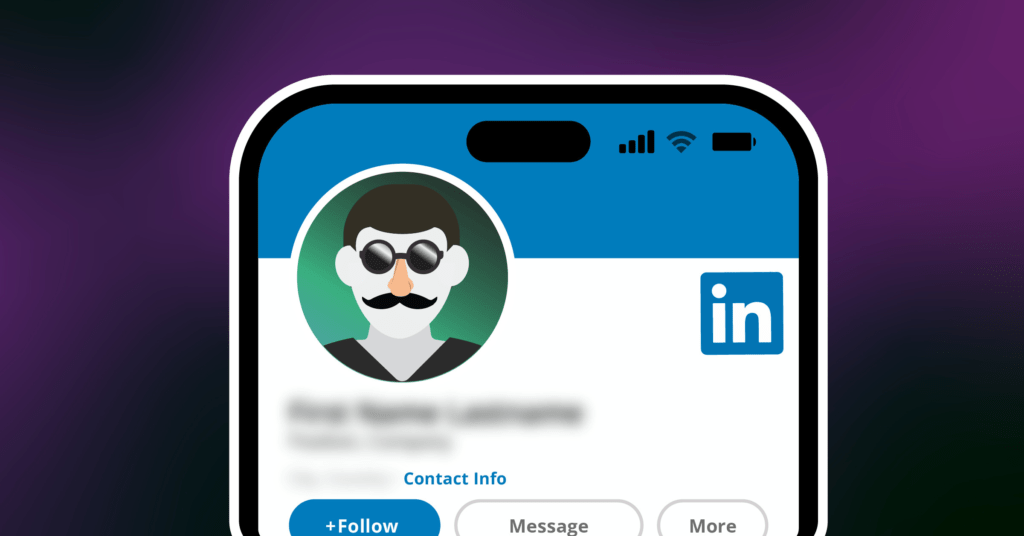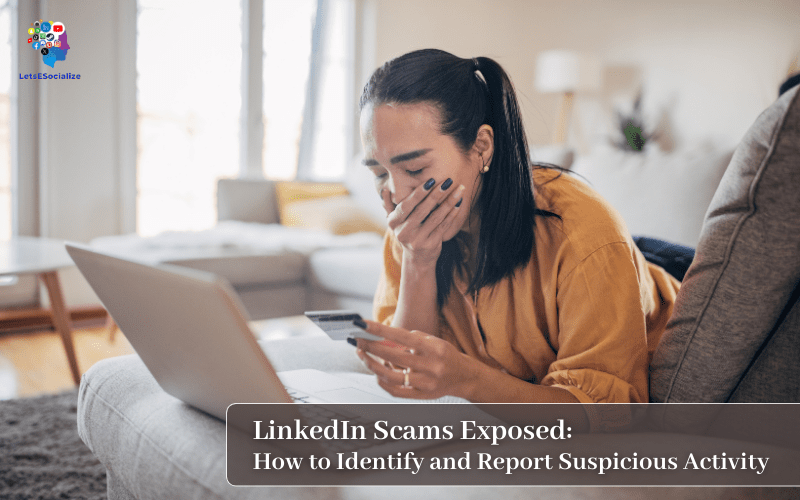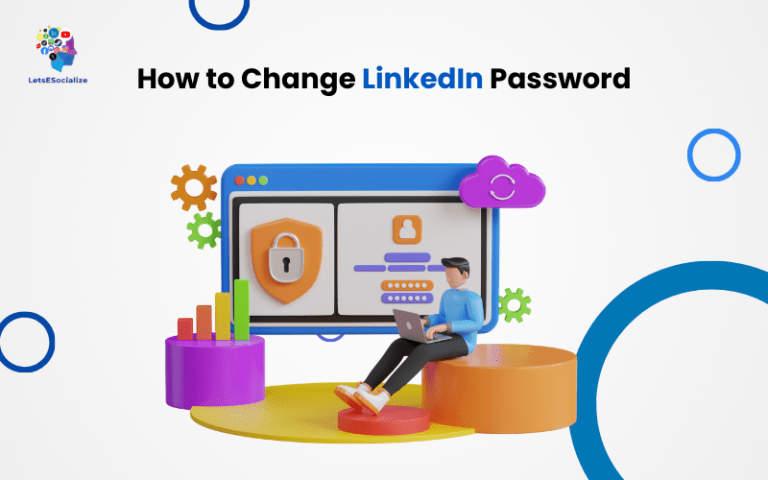With over 830 million members, LinkedIn is ripe territory for scammers targeting professionals through phishing, fraud, identity theft and hacking attempts. This guide covers common LinkedIn scams to watch for, best practices for protection and how to report suspicious accounts or messages.
Table of Contents
Why LinkedIn Attracts Scams
As the world’s largest professional networking platform, LinkedIn provides access to desirable targets like active job seekers, ambitious career builders, influential executives and popular companies.
Scammers prey on members by:
- Harvesting personal information through phishing attempts extracting sensitive data for financial fraud or identity theft
- Infecting devices with malware via phishing links spreading viruses stealing credentials or data
- Committing financial fraud by having targets pay upfront for fake services, job opportunities, event tickets, etc. then disappearing
- Damaging reputations by hacking profiles and sending spam to connections under the account owner’s name
Let’s break down common scams to avoid falling victim plus best practices for protection…
Also read: The 12 Best LinkedIn Learning Courses to Take in 2024
Popular LinkedIn Scam Types
While any fraudulent schemes are possible, these tactics represent prevalent hazards discovered on LinkedIn:
Phishing Scam

Phishing remains one of the most pervasive threats. It involves sending legitimate-looking but fraudulent emails or messages duping recipients into clicking links harvesting credentials or installing malware.
On LinkedIn, common phishing themes include:
- Fake LinkedIn notification emails with “Security Alert” urgent calls-to-action linking to phishing sites mimicking LinkedIn’s login to steal usernames and passwords
- Fake job offers or sponsorship opportunities containing malicious links or attachments downloading malware to compromised accounts
- Messages pretending to be from connections needing “urgent help” forwarding phishing pages
Watch for slight email deviations like “LinkedIn” vs LinkedIn or odd URLs. And don’t click unfamiliar links without verifying first, even if seemingly sent from connections.
Job Scams

These job scams promise exciting opportunities that end up being fraudulent:
- Fake listings mimicking real companies recruiting candidates then requesting upfront payments for training, certifications, or equipment
- Posts swindling candidates to pay for false background checks, visa services or applicant tracking systems
- Schemes touting remote gigs asking targets to cash fraudulent checks or process payments illegally funneling funds
If something seems too good to be true, it likely is! Verify postings by contacting company recruiters directly through official sites and channels.
Spear Phishing Scam

While phishing casts wide nets hoping anyone takes the bait, spear phishing precisely targets select individuals using personal details to improve credibility, especially targeting executives.
On LinkedIn, they may:
- Reference family info, job history, education, contacts, etc. included on your profile to appear familiar
- Impersonate colleagues asking for sensitive info or redirecting to fake login pages to capture credentials
- Pose as vendors, clients, recruiters, etc. sending infected files or links seem specifically relevant
Before clicking links or attachments, always directly verify the source even if the message knows personal specifics about you!
Romance Scams

Bad actors build relationships under fake identities to exploit targets’ emotions and trust. Eventually, they ask for money for claimed emergencies, trips to finally meet, or other stories that they pocket.
Also read: How do I change my username on LinkedIn?
Business Proposal Scams

Smooth-talking scammers posing as investors, mentors or partners approach members promoting dubious proposals, deals, and ventures that require you to send or laundering money.
They often target those listing entrepreneurship or consulting in their profile then use business jargon to appear legit when prying for capital or banking access instead funding or promoting projects.
Fake Profiles + Impersonation Scam

Scammers create fake profiles mimicking real professionals using copied images and backgrounds. Or they hack legitimate accounts sending spam to their unsuspecting connections.
This destroys genuine users’ reputations while allowing scammers to deceive targets by overstating credentials and achievements as they make fraudulent offers and requests.
Here are general precautions protecting against various scams…
LinkedIn Scam Prevention Tips
Applying healthy skepticism and cybersecurity hygiene defends against threats aiming to manipulate through urgency, vanity, and greed.
Verify Everything
- Emails/messages: Check sender addresses and domain names match official sources. Inspect URLs for subtle misspellings. Call companies directly to confirm if unsure.
- Posts: Reverse image search profile pictures. Vet opportunities through company sites, not just post links.
- Contacts: Video chat new connections making bold requests to validate identity.
When unsure, search requests verbatim to uncover common scams before engaging.
Guard Personal Information
- Limit profile visibility settings showing sensitive details minimally necessary.
- Never share confidential data like bank accounts, SSNs or passwords without independent verification first.
- Frequently change account credentials to limit exposure if unintentionally shared via phishing.
Use Protection Software
- Install comprehensive antivirus software like Norton 360 blocking malware and phishing site access.
- Utilize tools like Google Safe Browsing to check site reputations before visiting unknown links.
- Consider using a VPN to encrypt data transfer protecting privacy.
Report Suspicious Behavior
If scam attempts do slip through defenses, immediately report them to protect others:
- Report LinkedIn profiles violating policies using on-page links
- Report suspicious LinkedIn messages selecting “I don’t like this message”
- Report fraudulent job posts and phantom employer profiles via this form
- Report LinkedIn impersonation accounts here
- Forward scam emails to the FTC adding “LinkedIn” in the notes
- Submit suspicious texts to spam reporting numbers like 7726 in the US
Uncovering scams protects the community while reducing economic impacts and security risks.
Here are additional tips for securely managing your primary business networking presence…
Also read: How to Find People on LinkedIn: The Ultimate 2024 Guide
LinkedIn Account Security Best Practices
Vigilantly monitoring account activity and cautiously handling unknown contacts limits vulnerability.
Analyze Connection Requests
Review all connect requests before accepting to assess legitimacy:
- Profile credibility: Scan profiles and posts for odd content not matching stated roles and credentials.
- Recent inviters: Click the total connections stat to inspect who else the account has recently invited to uncover suspicious batch outreach.
- Common connections: Cross-reference mutual connections with a direct message asking if they know this person to confirm identity.
Monitor Notification Settings
Configure notification preferences delivering alerts on important account changes:
- Suspicious login detection: Get real-time warnings of logins from unrecognized locations indicating hacking attempts.
- Profile viewing receipts: Weekly summaries showing who viewed you enable spotting repeat lurkers with ulterior motives.
- Post moderation alerts: Receive instant notifications if any content gets improperly flagged or taken down by mistake helping prevent censoring.
Acting quickly on unauthorized changes prevents irreversible reputation damage.
Limit API Access
Revoke permissions from unfamiliar apps having potential access to data through LinkedIn’s API in account settings under “Partner Integrations”.
Secure Accounts With MFA
Require personal one-time-passcodes for signing in sent to your secondary emails or mobile devices enabling multi-factor authentication. Don’t rely solely on passwords!
Avoid Public WiFi
Refrain accessing LinkedIn on shared hotspots lacking encryption protections concealing activity from snooping. Password stealing in transit remains prevalent.
Staying vigilant against malicious schemes preserves your hard-earned professional credibility and opportunities. But sophisticated hackers can still slip through the tightest defenses, so what do you do if account compromise occurs?
Recovering Compromised Accounts
If a scammer takes over your profile, immediately act to regain control and undo damages:
- Secure accounts: Change LinkedIn, email and any financial account passwords previously accessed from the device. Enable MFA across logins for added protection.
- Notify connections: Send messages explaining the situation was not you – especially for any undesirable spam sent during the breach. Ask them to tighten security too.
- Remove traces: Delete fraudulent posts, messages, or connection requests made from your hacking account before reporting it.
- Collect evidence: Gather screenshots of any phishing emails, spam messages, or posts supporting your claims to send to LinkedIn.
- Report hacking: Submit an official account hacking report to LinkedIn here with as many details of unauthorized access as possible.
- Disconnect apps: Revoke access to any unfamiliar third-party apps that may have been gained through your account in case the hacker established API permissions.
With credible evidence of hacking, LinkedIn should restore full legitimate access once you confirm that you follow strengthened security protocols going forward. But damages to connections may linger if the impersonator deeply violates trust.
Here are answers to other common questions about LinkedIn scams:
FAQ’s
Conclusion
As LinkedIn continues growing in popularity among professionals, opportunistic scammers flock targeting members through wide-ranging tactics like phishing attempts, job scams, business proposal frauds, fake profiles and hacking.
But staying vigilant in vetting unknown contacts, avoiding clicking suspicious links, enabling security protocols, monitoring account changes and immediately reporting frauds minimizes vulnerability.
What other LinkedIn scams or protection tips have you come across? Share your experiences guarding against the rare but dangerous hazards hampering productivity so we can collectively secure professional networking for positive growth.






